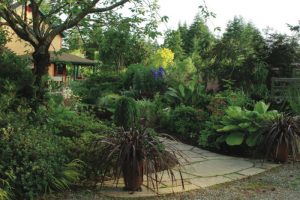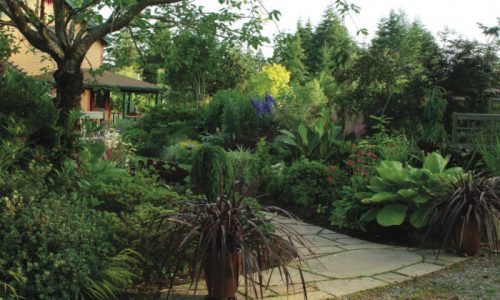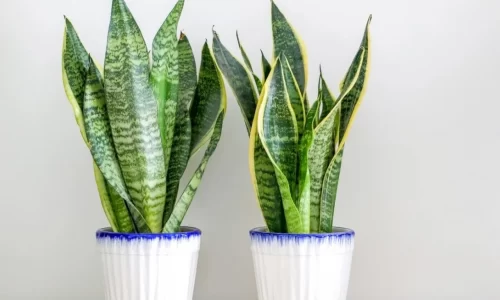Introduction
When it comes to nurturing a healthy and vibrant garden or maintaining a lush, green lawn, the foundation lies in the soil. However, not all soils are created equal. In this blog post, we will explore the distinctions between two commonly used soil types: Scotts Lawn Soil and topsoil. By understanding their unique characteristics, you can make an informed decision on which option best suits your landscaping needs.
Scotts Lawn Soil: Enhancing Growth and Nutrient Retention
Scotts Lawn Soil is a specially formulated blend designed to provide optimum conditions for grass and plants. It typically consists of a mix of organic matter, peat moss, and other essential ingredients. Here are some key features of Scotts Lawn Soil:
a. Nutrient Content:
Scotts Lawn Soil is enriched with essential nutrients, such as nitrogen, phosphorus, and potassium. These nutrients play a crucial role in promoting healthy root development, strong stems, and vibrant foliage.
b. Water Retention:
One of the advantages of Scotts Lawn Soil is its ability to retain water effectively. This helps to prevent overwatering and ensures that moisture is available to the roots for extended periods, reducing the frequency of watering.
c. Aeration and Drainage:
The composition of Scotts Lawn Soil allows for adequate aeration and drainage. It strikes a balance between retaining moisture and preventing waterlogging, which is essential for root health and overall plant vigor.
d. pH Balance:
Scotts Lawn Soil is often pH-balanced to support optimal nutrient absorption by plants. This ensures that the soil’s acidity or alkalinity does not hinder the availability of vital elements.
Topsoil: The Versatile Foundation for Landscaping Projects
Topsoil is the uppermost layer of soil found in your garden or yard. It is rich in organic matter and serves as the foundation for plant growth. While topsoil can vary depending on its source, here are some general characteristics:
a. Composition:
Topsoil is primarily composed of a mixture of sand, silt, clay, and organic matter. It contains beneficial microorganisms, organic nutrients, and minerals necessary for plant growth.
b. Nutrient Levels:
The nutrient content of topsoil can vary depending on its source and quality. It is often less nutrient-rich compared to specially formulated blends like Scotts Lawn Soil. However, it can be amended with fertilizers and compost to enhance its fertility.
c. Drainage and Water Retention:
The drainage and water retention properties of topsoil depend on its composition. Sandy topsoil drains quickly but may require more frequent watering, while clay-rich topsoil retains water but can become compacted if not properly managed.
d. Landscaping Applications:
Topsoil is commonly used for various landscaping projects, such as leveling lawns, filling garden beds, and creating new planting areas. It provides a solid foundation for healthy plant growth and can be amended to meet specific requirements.
Choosing the Right Soil for Your Needs
Now that we’ve explored the characteristics of Scotts Lawn Soil and topsoil, let’s consider how to choose the right soil for your specific needs:
a. Lawn Care:
If you’re primarily focused on maintaining a healthy and vibrant lawn, Scotts Lawn Soil can be an excellent choice. Its nutrient-rich composition, water retention capabilities, and aeration properties provide an ideal environment for grass to flourish. It can help promote deep root growth, enhance color and density, and improve overall lawn health.
b. Garden Beds and Planting Areas:
When it comes to creating garden beds or planting areas for flowers, vegetables, or other plants, both Scotts Lawn Soil and topsoil can be suitable options. Consider the specific requirements of your plants and the existing soil conditions. If your garden soil lacks nutrients or has poor drainage, Scotts Lawn Soil can be used as a soil amendment to improve fertility and water retention. However, if your existing topsoil is of good quality, you can supplement it with compost or organic matter to enhance its nutrient content.
c. Landscaping Projects:
For landscaping projects such as leveling uneven areas, filling in low spots, or establishing new planting areas, topsoil is commonly used. Its versatility allows it to be adapted to various situations and can be mixed with other soil amendments as needed. Topsoil can provide a solid base for landscape features like flower beds, shrubs, or trees, and can be adjusted based on the specific requirements of the project.
d. Consideration of Budget and Availability:
Another factor to consider when choosing between Scotts Lawn Soil and topsoil is your budget and availability. Scotts Lawn Soil is a commercially formulated product that comes with a specific price point, while topsoil can be sourced locally, often at a lower cost. Assess your budget and determine what options are readily available to you in your area.
Tips for Soil Preparation and Maintenance
Regardless of whether you choose Scotts Lawn Soil or topsoil, proper soil preparation and maintenance are key to ensuring long-term success in your gardening and landscaping endeavors. Here are some essential tips to keep in mind:
a. Soil Testing:
Before starting any project, it’s beneficial to conduct a soil test. This will provide valuable information about the pH level, nutrient content, and overall soil health. Soil testing kits are available at gardening centers or through local agricultural extension offices. By understanding your soil’s characteristics, you can make informed decisions about soil amendments and fertilizers.
b. Soil Amendments:
Depending on the results of your soil test, you may need to amend your soil to optimize its fertility and structure. Organic matter, such as compost, well-rotted manure, or peat moss, can be added to improve nutrient content, moisture retention, and drainage. Additionally, you can incorporate specific fertilizers or soil conditioners based on the nutrient deficiencies identified in the soil test.
c. Proper Drainage:
Adequate drainage is crucial for healthy plants. If your soil has poor drainage, consider adding organic matter or sand to improve its structure and prevent waterlogging. Alternatively, if your soil drains too quickly, adding compost or mulch can help retain moisture. Proper drainage ensures that roots receive sufficient oxygen and minimizes the risk of root rot.
d. Mulching:
Applying a layer of organic mulch, such as wood chips or straw, around plants and in garden beds offers several benefits. Mulch helps conserve soil moisture, suppresses weed growth, moderates soil temperature, and gradually adds organic matter to the soil as it breaks down. It also provides a protective barrier against erosion and helps maintain a more consistent soil environment.
e. Regular Watering and Maintenance:
After planting, it’s important to establish a watering routine that meets the specific needs of your plants. Deep, infrequent watering encourages root growth, while shallow, frequent watering can lead to shallow root development. Monitor soil moisture levels regularly and adjust watering accordingly. Additionally, regularly inspect your plants for signs of pests, diseases, or nutrient deficiencies, and address them promptly to maintain plant health.
f. Seasonal Maintenance:
Different seasons require different care. In the spring, focus on soil preparation, incorporating amendments, and planting. Summer requires consistent watering and vigilant pest control. In the fall, clean up fallen leaves, add mulch, and prepare for winter. During winter, protect vulnerable plants from frost and extreme temperatures, and take appropriate measures to prevent soil erosion.
By following these tips and tailoring your soil care practices to your specific needs, you’ll create an optimal growing environment for your plants and ensure long-term success in your gardening and landscaping endeavors.
Conclusion
Selecting the right soil type, whether it’s Scotts Lawn Soil or topsoil, is an essential step in creating a healthy and thriving garden or lawn. Understanding the unique characteristics of each soil type and considering your specific gardening or landscaping needs will help you make an informed decision. Additionally, implementing proper soil preparation and maintenance practices, such as soil testing, amendments, drainage improvement, mulching, and regular care, will ensure the long-term success of your plants and outdoor spaces.
Remember that soil is a living, dynamic entity that requires attention and care. With the right soil foundation and proper maintenance, you can cultivate a beautiful, resilient garden or lawn that brings joy and satisfaction for years to come.
[youmightlike]








